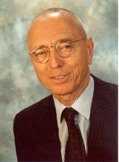Career
De Hoop worked as an assistant professor (1950—1957), associate professor (1957—1960), full professor (1960—1996), and Lorentz Chair emeritus professor (1996—present) for Delft University of Technology, his alma mater. He taught electromagnetic theory, applied mathematics, electrical engineering, mathematics, and computer science. [1] In 1970, he founded the Laboratory of Elecromagnetic Research at Delft; this has since developed into a world-class center for electromagnetics. He spent a year in 1956 as a research assistant at University of California's Institute of Geophysics in Los Angeles in the United States. During his time there, he created a modification of the Cagniard method for calculating impulsive wave propagation in layered media. This modification was later called the Cagniard-de Hoop method and is now considered a benchmark tool in analyzing time-domain wave propagation. He spent a year-long sabbatical at the Philips Natuurkundig Laboratorium in Eindhoven working on magnetic recording theory. [2] [3] Among his PhD students was Jacob Fokkema, later rector at Delft 2002—2010. [1]
Since 1982, De Hoop has been a regular visiting scientist at the Schlumberger-Doll Research Center, formerly located in Ridgefield, Connecticut and now in Cambridge, Massachusetts in the United States. Here, he contributes to research on geophysical applications of acoustic, electromagnetic, and elastodynamic waves. Grants from the Stichting Fund for Science, Technology and Research, founded by Schlumberger, supported his research in Delft. [2]
In 1995, he published the Handbook of Radiation and Scattering of Waves. [2]
This page is based on this
Wikipedia article Text is available under the
CC BY-SA 4.0 license; additional terms may apply.
Images, videos and audio are available under their respective licenses.
